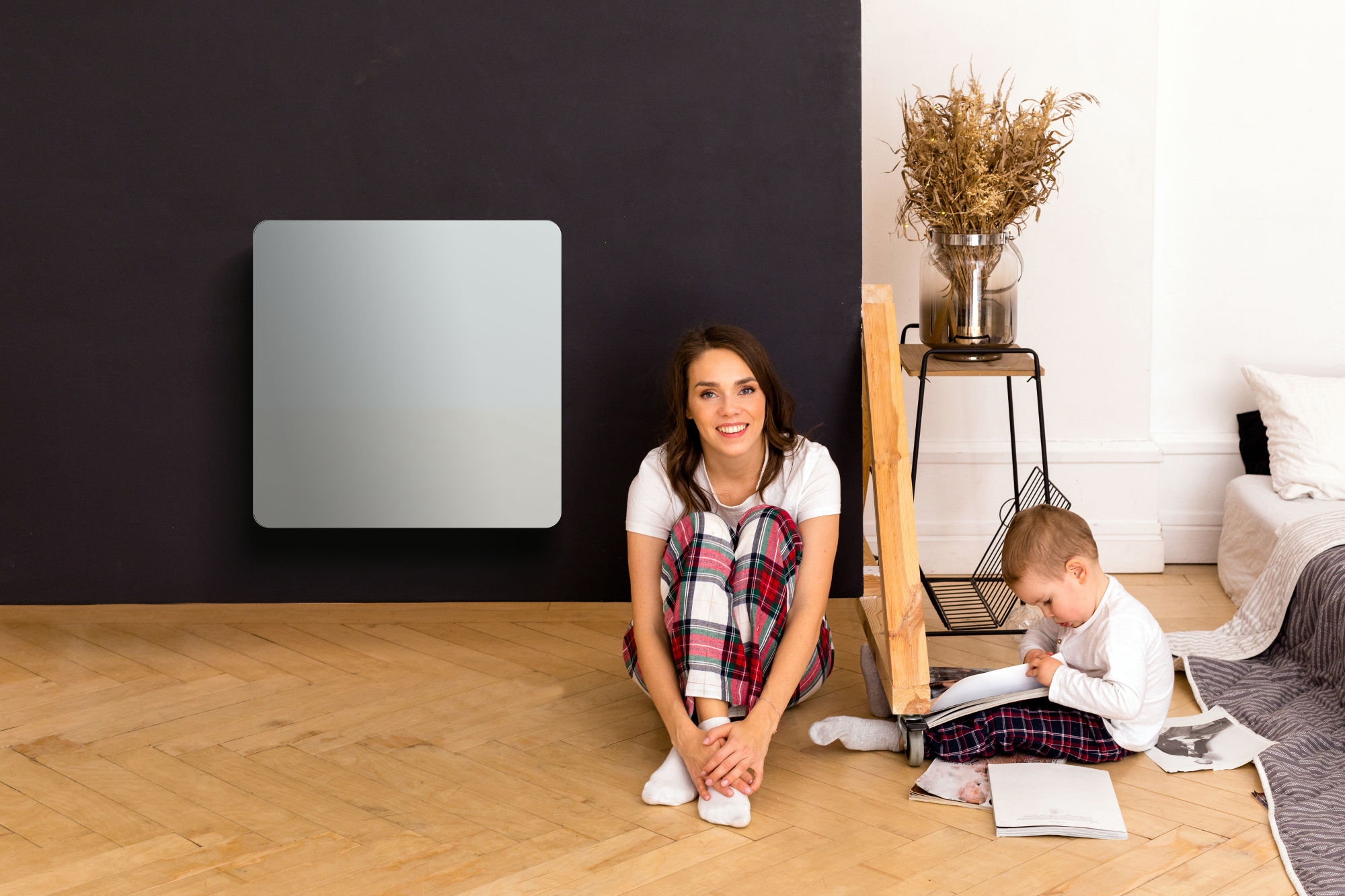
The main reason for the higher efficiency (kcal produced per Wh) is the advanced ultra-performance technology of Celsius and Fahrenheit, protected by 43 patents.
But there are other reasons as well.
Compared to traditional heating systems
The differences are due to the higher energy losses of traditional systems:
- Leaks between the gas burner and the heating devices.
- Losses from regulating gas heating: While gas heating devices need more than 10 minutes to heat up, the time for infrared Celsius and Fahrenheit devices is less than 4 minutes. By having a distributed regulation for each room the infrared heating as a whole is significantly more flexible. This translates into high-speed regulation and low energy consumption in rooms where the endogenous load varies or which receive natural radiation from the sun (free energy) during the winter months, especially from January to April.
- Losses of heat transmission through the walls. Tests show that in gas-heated houses the internal temperature of the walls exposed to the outside measured at the top of the wall itself is 14 ° C. In infrared-heated houses, this temperature rises to 19 ° C, and the average temperature of the entire wall is always higher than the air temperature in the room.
The result, with infrared panels, is a lower absorption of humidity by the walls exposed to the outside, therefore an increase in heat with less use of energy and finally a reduction in the formation of mold.
In support of this, it must be considered that damp walls, unlike dry ones, has drastically lower insulation values. Even a humidity percentage of only 4% decreases the insulation values by about 50%. With Celsius and Fahrenheit infrared heating, the building is sanitized by reducing the percentage of humidity in the air with a consequent increase in the insulation value and the increase in heat losses through the walls at a higher temperature is compensated. We will also achieve equal comfort with a lower internal temperature.

Compared to the latest generation heating systems
The higher efficiency of infrared systems compared to the latest generation heating systems (heat pumps and other radiant systems) is due to:
- In a radiant system powered by heat pumps we have only one radiant surface, while with the Celsius and Fahrenheit infrared system a small panel (60cm x 60cm) heats at least 3 walls and a floor (in addition to all the objects contained in the room). These heated surfaces become radiant and therefore surfaces at least 4 times higher than the previous system are obtained. This aspect, in particular, explains why the Celsius and Fahrenheit infrared systems are unbeatable for well-insulated houses and lose effectiveness as the insulating properties of the enclosure deteriorate. However, there is an empirical stratagem to avoid dispersion in houses with poor insulation: the infrared wave is reflected by the metals and therefore a plasterboard wall with an aluminum foil is enough to reflect the wave inside the environment and prevent it from being dispersed outside (with this empirical system an 8m3 sauna was built and brought to 50 ° C with only 800Wh of power used).
- The ability to better adapt to the heat demand: having a thermostat for each room, the infrared heating as a whole is significantly more flexible. This translates into high-speed regulation and low energy consumption in rooms where the endogenous load varies.



